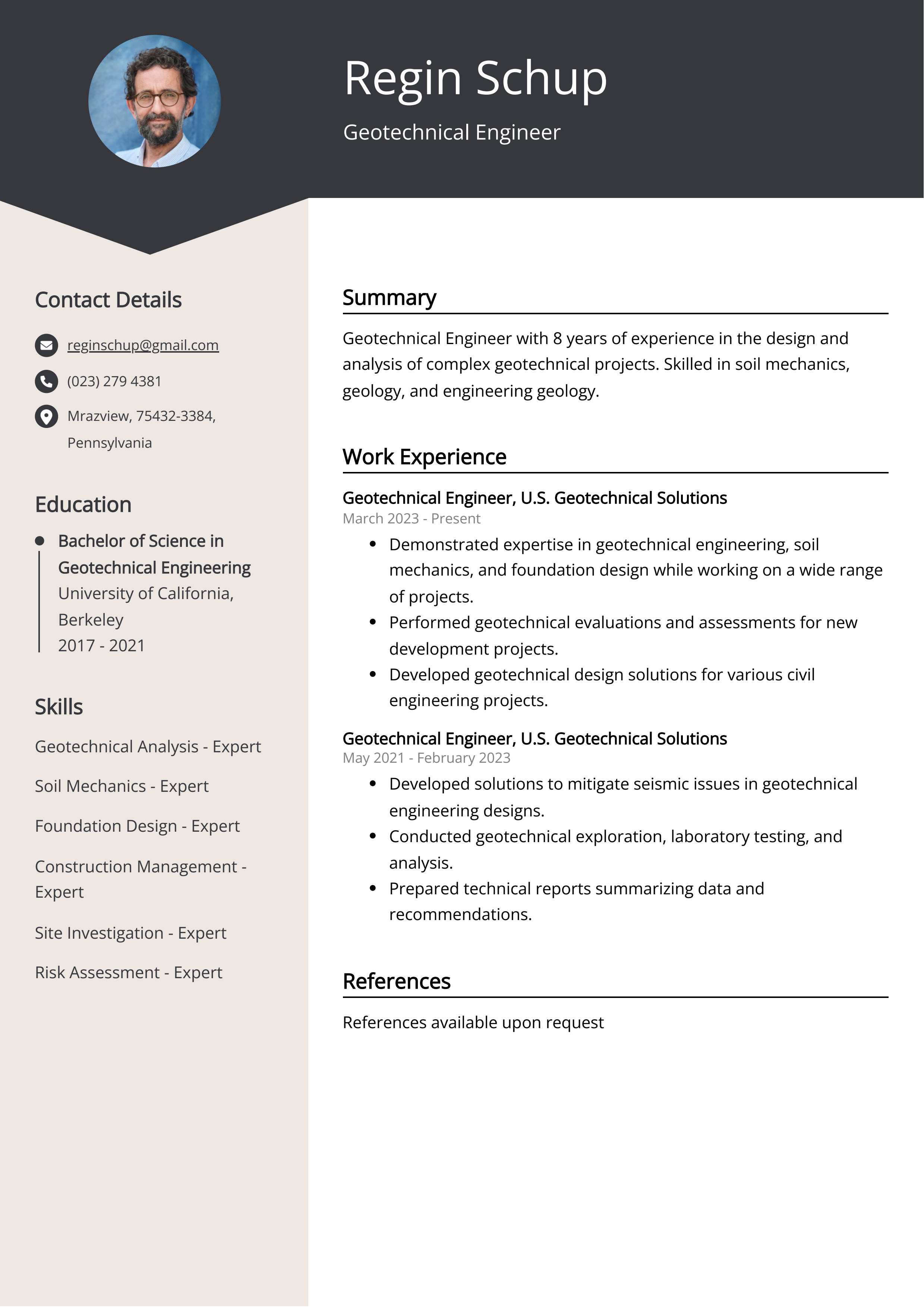The Geotheta PDFs
Table of ContentsNot known Details About Geotheta Examine This Report on GeothetaWhat Does Geotheta Mean?The Facts About Geotheta RevealedGeotheta - Truths

They perform website examinations, collect samples, perform laboratory tests, and evaluate data to examine the suitability of the ground for building jobs - Engineer of Record. Based upon their searchings for, geotechnical designers supply referrals for structure layout, incline security, maintaining frameworks, and reduction of geotechnical dangers. They work together with various other specialists, such as engineers, structural engineers, and construction groups, to make certain that geotechnical factors to consider are integrated right into the total task style and application
By examining the habits and residential or commercial properties of soil and rock, they can recognize possible geotechnical risks such as landslides, soil negotiation, or incline instability. Their experience assists avoid failures or crashes that might endanger lives and building. Right here are some detailed duties and duties of a geotechnical designer: Website Examination: Geotechnical designers conduct website examinations to gather information on subsurface conditions.
They translate the information to recognize the residential or commercial properties and behavior of the soil and rock, including their toughness, permeability, compaction features, and groundwater problems. Geotechnical Analysis and Design: Geotechnical designers assess the information gathered during website examinations to analyze the security and suitability of the site for construction tasks. They execute geotechnical calculations and modeling to examine aspects such as birthing ability, negotiation, incline stability, side planet pressures, and groundwater circulation.
The Definitive Guide to Geotheta
Structure Layout: Geotechnical engineers play a critical function in creating foundations that can securely sustain the designated structure. They assess the dirt problems and lots demands to determine the proper structure type, such as shallow structures (e.g., footings), deep structures (e.g (https://slides.com/geotheta)., stacks), or specialized techniques like dirt improvement. They consider elements such as settlement restrictions, birthing capacity, and soil-structure communication to develop ideal structure layouts
They review building plans, screen site tasks, and conduct area assessments to validate that the style referrals are followed. If unanticipated geotechnical problems arise, they assess the scenario and give referrals for removal or modifications to the design. Danger Analysis and Mitigation: Geotechnical designers evaluate geotechnical risks and threats related to the job website, such as landslides, liquefaction, or soil erosion.

Collaboration and Interaction: Geotechnical engineers work very closely with other experts associated with a job, such as engineers, architectural engineers, and building and construction groups. Effective communication and cooperation are important to incorporate geotechnical considerations into the general project design and construction procedure. Geotechnical engineers offer technological expertise, response questions, and guarantee that geotechnical requirements are fulfilled.
Unknown Facts About Geotheta
Here are some kinds of geotechnical designers: Foundation Engineer: Structure engineers focus on designing and assessing structures for structures. They examine the dirt problems, lots requirements, and site qualities to establish the most ideal foundation type and layout, such as shallow structures, deep foundations, or specialized techniques like heap structures.
They evaluate the elements affecting incline stability, such as dirt properties, groundwater problems, and slope geometry, and establish methods to stop slope failures and mitigate threats. Quake Engineer: check out here Quake engineers specialize in assessing and developing frameworks to withstand seismic pressures. They analyze the seismic risk of a website, examine soil liquefaction potential, and develop seismic design standards to make sure the security and durability of frameworks during earthquakes.
They do field screening, gather samples, and assess the collected information to identify the soil buildings, geologic formations, and groundwater problems at a site. Geotechnical Instrumentation Engineer: Geotechnical instrumentation engineers concentrate on surveillance and measuring the habits of soil, rock, and frameworks. They mount and preserve instrumentation systems that keep an eye on aspects such as soil negotiation, groundwater levels, slope activities, and structural displacements to examine efficiency and give early warnings of prospective issues.
Facts About Geotheta Revealed
They perform examinations such as triaxial tests, combination examinations, direct shear examinations, and leaks in the structure examinations to collect information for geotechnical evaluation and layout. Geosynthetics Designer: Geosynthetics designers specialize in the layout and application of geosynthetic materials, such as geotextiles, geogrids, and geomembranes. They use these products to improve dirt stability, enhance inclines, give drainage solutions, and control disintegration.
They have a tendency to be investigative individuals, which implies they're intellectual, introspective, and inquisitive. They are interested, systematic, sensible, logical, and sensible. Some of them are also social, meaning they're kind, generous, cooperative, patient, caring, valuable, understanding, tactful, and pleasant - Consulting Engineers.
In the office environment, geotechnical designers make use of specialized software application devices to carry out calculations, produce styles, and assess information. They prepare records, evaluation task requirements, connect with clients and group members, and coordinate task activities. The office setting offers a helpful setting for research, analysis, and cooperation with various other experts associated with the task.
The Main Principles Of Geotheta
They often see job websites to perform site examinations, analyze geotechnical conditions, and gather information for evaluation. These sees entail taking a trip to different areas, occasionally in remote or difficult surfaces. Geotechnical engineers might perform dirt tasting, conduct examinations, and monitor building tasks to ensure that the geotechnical facets of the task are being applied appropriately.
Geotechnical designers also work in specialized geotechnical laboratories. In these facilities, they perform experiments, execute examinations on soil and rock examples, and assess the design residential properties of the materials. Geotechnical research laboratory engineers function thoroughly in these environments, managing testing tools, operating instruments, and tape-recording data. They work together with other research laboratory personnel to ensure exact and trusted testing results.